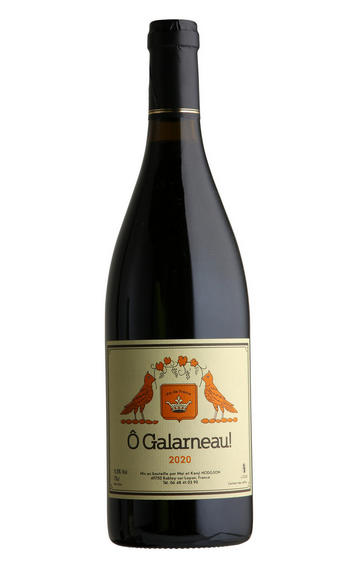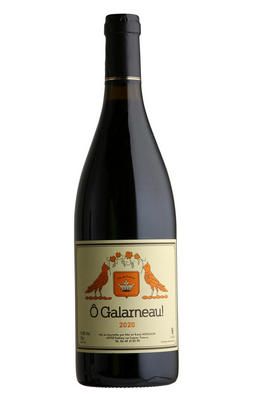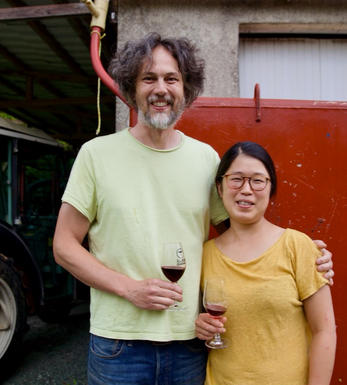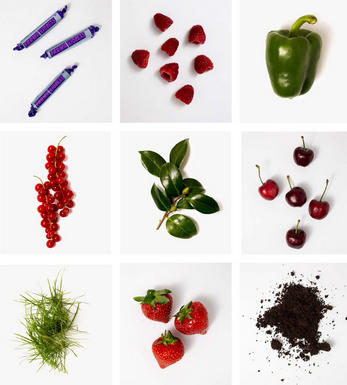
2020 Mai & Kenji Hodgson, Ô Galarneau! Rouge, Vin de France

About this WINE

Mai & Kenji Hodgson
Mai & Kenji Hodgson's venture into viticulture began unexpectedly: Kenji, initially pursuing a career as a wine writer, found himself in Japan for an internship. It was there that he crossed paths with a winemaker advocating for natural winemaking, and his introduction to French natural wines ignited his passion.
Upon returning to Canada, Kenji met Mai in Vancouver, with whom he shared an enthusiasm for natural wines. Initially planning to acquire vineyards in Canada, their direction changed when winemaker mentor Mark Angeli suggested purchasing land in Anjou, France.
Their vineyards are located in Rablay-sur-Layon, in Loire, and boast characteristic shale and schist soils. Over the last decade, they've nurtured about 4 hectares of vineyards. Their approach is simple, prioritising structure, elegance, and power while maintaining energy and fruitfulness.
Working with grape varieties like Grolleau and Chenin Blanc, they craft limited quantities of wines.

Vin de France
Vin de France is a wine classification in France that was introduced in 2010 to replace the former Vin de Table category. It represents a more flexible and modern approach to French wine production, offering winemakers greater freedom in terms of grape sourcing, blending, and winemaking techniques.
Unlike wines with controlled appellations such as AOC Alsace or Vin de Pays, which are tied to specific regions within France, Vin de France wines can be sourced from grapes grown anywhere in the country. This gives winemakers the freedom to experiment with grapes from different regions, allowing for greater creativity and innovation.
Winemakers can blend grape varieties from different regions or even different countries to create unique flavour profiles. This flexibility enables the production of a wide range of wine styles, from traditional varietal wines to innovative blends.
While Vin de France wines offer greater flexibility in production, they still must adhere to certain labelling requirements. The label must include the designation "Vin de France," along with the producer's name and the volume of alcohol. Additional information such as grape variety, vintage, and specific geographical origin may also be included on the label.
Vin de France wines may not have the prestige or strict regulations of wines from controlled appellations. However, they can still offer excellent quality and value. Many producers use Vin de France as a platform for experimentation and innovation, resulting in a diverse range of wines that cater to various tastes and preferences.
Vin de France wines are often positioned as versatile, everyday wines that are accessible and easy to understand. They can offer a good balance between quality and affordability, making them popular choices for everyday consumption.

Cabernet Franc
Cabernet Franc is widely planted in Bordeaux and is the most important black grape grown in the Loire. In the Médoc it may constitute up to 15% of a typical vineyard - it is always blended with Cabernet Sauvignon and Merlot and is used to add bouquet and complexity to the wines. It is more widely used in St.Emilion where it adapts well to the cooler and moister clay soils - Cheval Blanc is the most famous Cabernet Franc wine in the world, with the final blend consisting of up to 65% of the grape.
Cabernet Franc thrives in the Loire where the cooler growing conditions serve to accentuate the grape's herbaceous, grassy, lead pencil aromas. The best wines come from the tuffeaux limestone slopes of Chinon and Bourgeil where growers such as Jacky Blot produce intense well-structured wines that possess excellent cellaring potential.


Buying options
Add to wishlist
Description
Mai and Kenji, hailing from Japan and Canada respectively, found their winemaking inspiration in France in 2009. Their journey began with tourist visas, but a meeting with local winemakers ignited a new passion. Settling in France, they embraced the wisdom of Anjou's farmers, cultivating 4.5 acres with meticulous care. In their cellar, simplicity reigns, with no high-tech gadgets and additives, just patience and trust in natural processes.
This 100% Cabernet Franc hails from multiple plots in Rablay-sur-Layon, including Rouliers. It is an organic and natural wine, as the estate adds no sulfur beyond what is naturally present in the grapes. Following a three-week maceration and fermentation involving indigenous yeasts, it matures for 12 months in tanks, resulting in a delicate balance of fruity and spicy flavours. Enjoy it paired with braised black pudding, lamb shoulder, or chuck steak.
Drink now
Berry Bros. & Rudd
wine at a glance
Delivery and quality guarantee